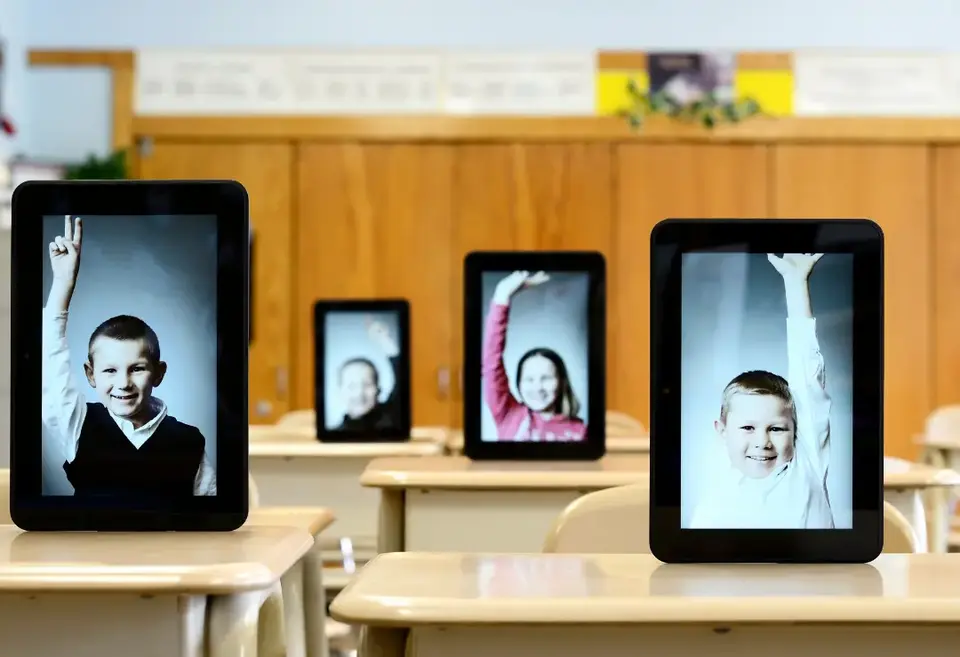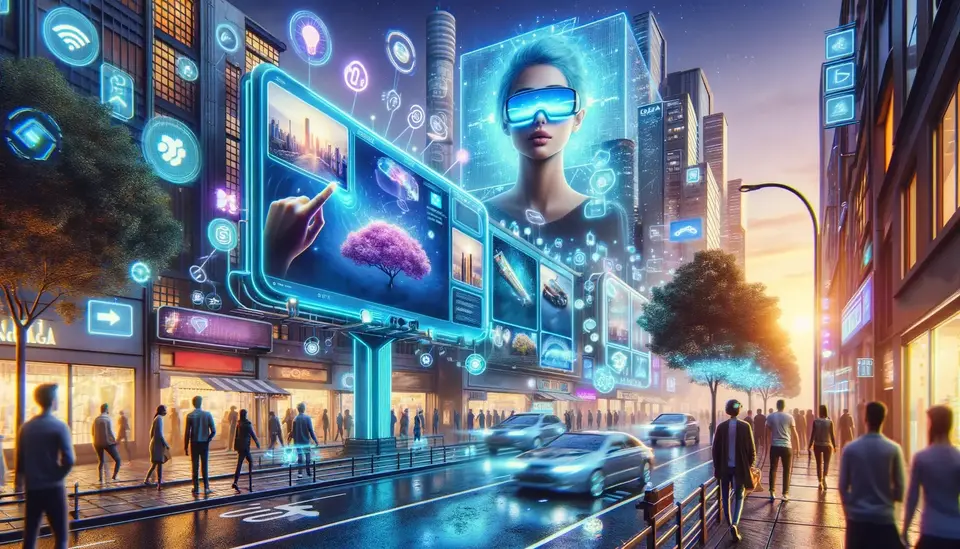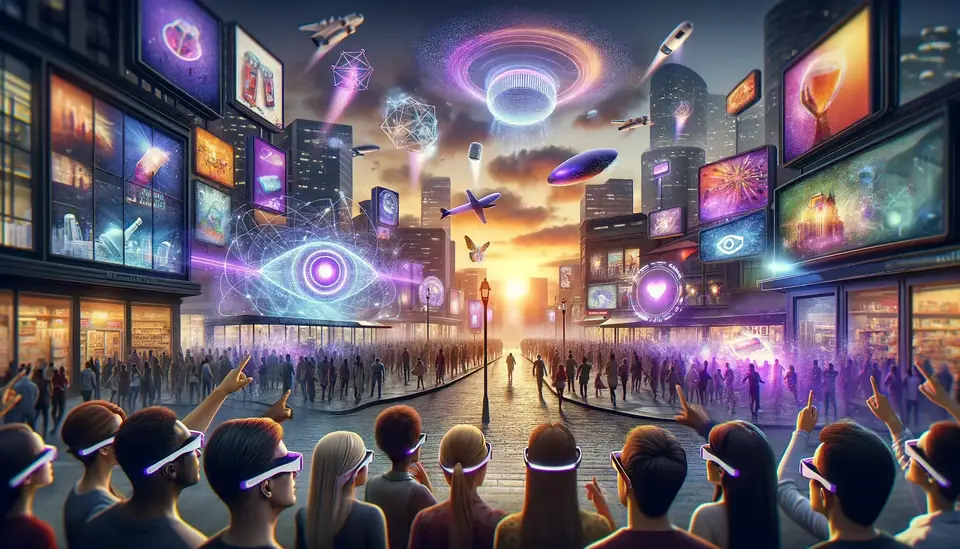Disadvantages of Augmented Reality (AR)
Posted on September 30, 2023 20 minutes 4207 words
Table of contents
Introduction
In recent years, Augmented Reality (AR) has emerged as a buzzword in the lexicon of technological advancements, reshaping the boundaries between the virtual and the real world. Essentially, AR refers to the enhancement of the physical environment by overlaying digital information, such as images, videos, or sounds, onto the real world. This innovative technology utilizes various devices such as smartphones, tablets, or AR glasses to alter our perception of reality, adding a layer of digital interaction to our daily lives.
The wave of AR has undeniably pervaded multiple sectors including education, healthcare, real estate, and entertainment. In education, for instance, AR can transform learning experiences by making them more interactive and immersive, fostering engagement and retention. Likewise, the real estate sector leverages AR to offer virtual property tours, allowing potential buyers to explore properties from the comfort of their homes. Notwithstanding its nascent stage, the commercial interest and widespread adoption of AR are ever-increasing, as businesses and organizations are constantly finding new and innovative ways to incorporate this technology into their operations to enhance user experience and engagement.
However, as with any technological phenomenon that rapidly integrates into the fabric of society, it’s prudent to navigate its trajectory with a critical lens. While AR promises a multitude of benefits including enhanced learning experiences and novel forms of entertainment, it is equally important to discuss and be aware of the potential downsides that may accompany its widespread adoption. The exploration of potential drawbacks, ranging from privacy concerns to physical health implications, is not merely an exercise in caution but a necessary endeavor to foster responsible and ethical advancements in this field.
By delving into the disadvantages of AR, stakeholders - be it developers, users, or policymakers - can anticipate challenges and work proactively to mitigate them. This approach ensures that as we forge ahead in this digital frontier, we maintain a balance, safeguarding the welfare and interests of all involved. Through a comprehensive discussion on the potential pitfalls of AR, we can pave a path towards a more inclusive, safe, and ethical technological future.
As we delve deeper into this subject, we aim to shed light on the various facets of the disadvantages associated with AR, providing a well-rounded perspective that enables informed decision-making and responsible engagement with this burgeoning technology. Let us embark on this journey with a critical, yet open mind, fostering a dialogue that encourages reflection and foresight in the realm of augmented reality.
Section 1: Technical Limitations
As Augmented Reality (AR) continues its stride into mainstream adoption, it’s imperative to analyze the potential barriers and technical limitations that might hamper its progress. Delving into the intricacies, we find that these limitations largely manifest in hardware inadequacies, software challenges, and user interface issues, each adding a layer of complexity to the user experience. Let us navigate through these pressing concerns in detail:
1. Hardware Limitations
The hardware components form the backbone of AR experiences, making the role they play in the user experience absolutely pivotal. However, current hardware comes with its own set of limitations.
-
High Costs of AR Devices The manufacturing of AR devices involves the incorporation of advanced technologies, which naturally escalates their market prices. High costs can potentially hinder widespread adoption, as not everyone can afford these premium devices. This could potentially create a divide between individuals and organizations that can leverage AR’s benefits and those who cannot. As we move forward, it is vital to work towards making these technologies more affordable to promote inclusivity and widespread use.
-
Limited Battery Life AR applications are known to consume a significant amount of power, which puts a strain on the battery life of devices. Users may find themselves constantly charging their devices, which can interrupt the user experience and limit the usability of AR in scenarios where prolonged use is necessary. Developing power-efficient algorithms and hardware components could be key to overcoming this limitation.
-
Over-reliance on Network Connectivity AR experiences often require stable and high-speed internet connections to function seamlessly. This reliance can prove to be a significant barrier, especially in regions with limited or inconsistent network connectivity. Furthermore, heavy network traffic can lead to lagging and buffering, undermining the immersive experience AR aims to offer. To mitigate this, advancements in offline AR capabilities and enhancing network infrastructures globally would be essential steps.
2. Software Challenges
The software ecosystem of AR, while brimming with potential, currently faces a series of challenges that need to be addressed to unlock its full potential.
-
Bugs and Glitches Like any software, AR applications are prone to bugs and glitches that can interrupt the user experience. These technical issues can range from minor annoyances to significant problems that prevent the software from functioning correctly. A commitment to robust testing and ongoing software maintenance is critical to minimizing these issues and providing a smooth user experience.
-
Limited Content Available The AR landscape is still relatively young, and as a result, the availability of quality content is limited. Developing AR content can be resource-intensive and requires specialized skills, which further limits the pace at which new content can be created. Collaborations between content creators, developers, and industry experts can potentially accelerate the development of a rich and varied content ecosystem.
-
Potential Incompatibility with Existing Systems AR applications may face compatibility issues with existing systems and platforms, making integration a complex process. Users might find it challenging to incorporate AR into their existing workflows due to these compatibility issues. Hence, developing standards and protocols to facilitate easy integration should be a priority for the industry.
3. User Interface Issues
As users navigate through AR environments, they encounter user interface (UI) elements that are critical in shaping their experience. However, the current state of UI in AR presents a couple of significant challenges:
-
Complexity in User Interfaces AR introduces a new dimension of interaction, which can sometimes lead to complex and non-intuitive user interfaces. Users might find it challenging to navigate these interfaces, leading to frustration and a steep learning curve. The development of user-centric design philosophies, focusing on simplicity and intuitive navigation, can significantly enhance the user experience.
-
Potential for Information Overload AR has the ability to overlay vast amounts of information onto the real world, which, if not managed properly, can result in information overload for the user. This can be overwhelming and detract from the primary objectives of using the AR application. Designers and developers need to focus on presenting information in a manner that is easy to digest, possibly incorporating features that allow users to control the amount and type of information displayed.
By acknowledging and addressing these technical limitations, stakeholders can work towards fostering a mature and robust AR ecosystem that promises not only immersive experiences but also usability, accessibility, and value for a wider audience.

Section 2: Health and Safety Concerns
The rapid integration of Augmented Reality (AR) into various aspects of our lives, while promising a revolutionary shift in the way we interact with technology and the world around us, also necessitates a careful consideration of its implications on health and safety. From physical discomforts to mental health challenges, the spectrum of concerns is broad and deserves a thoughtful analysis. Let’s explore these concerns in detail:
1. Physical Health
AR interfaces, while being interactive and engaging, pose certain risks to physical health, which are mainly characterized by eye strain and a heightened potential for accidents.
-
Eye Strain and Discomfort Extended use of AR devices can cause considerable strain to the users’ eyes. The phenomenon often termed as “computer vision syndrome” encompasses eye strain, dryness, and discomfort, potentially leading to long-term vision problems. Users are often so engrossed that they overlook the need for regular breaks, which can exacerbate the strain. It is thus essential for AR applications to incorporate features that encourage users to take necessary breaks and possibly even include settings that adjust the brightness and contrast to reduce eye strain.
-
Potential for Accidents (Distractions while Walking or Driving) AR can potentially create immersive experiences that distract users from their immediate surroundings. This has serious implications, particularly when users are engaged with AR applications while walking or driving. The distractions can lead to accidents, sometimes with severe consequences. Policymakers and developers need to work hand in hand to create guidelines and safety features that minimize distractions and promote safe use of AR technology in various settings.
2. Mental Health
The effects of AR are not limited to physical health; they extend profoundly into the realm of mental health. This new age technology can potentially foster conditions that precipitate mental health challenges including increased isolation, dependency, and a blurred distinction between reality and virtuality.
-
Increased Isolation While AR offers interactive and engaging experiences, there is a growing concern that it might lead to increased isolation. As users get more absorbed into the virtual worlds, the time spent on real-life social interactions diminishes. This isolation can potentially lead to a range of mental health issues including depression and anxiety. Communities and individuals need to be cognizant of this risk and work towards fostering a balanced approach to technology use, where real-life interactions are not completely overshadowed by virtual engagements.
-
Dependency and Addiction Like many technological advancements, AR carries the risk of fostering dependency and addiction. Users might find themselves spending an increasing amount of time engaged with AR applications, sometimes at the expense of other important aspects of life such as work, education, and personal relationships. It is critical to develop mechanisms within AR applications that encourage responsible use, including features that alert users about excessive use and promote regular breaks.
-
Blurring of the Lines between Reality and Virtuality A unique challenge posed by AR is the blurring of lines between the real world and virtual environments. As AR integrates virtual elements seamlessly into the real world, it might become increasingly difficult for users, especially young children, to differentiate between what is real and what is virtual. This blurred distinction can have significant implications for users’ perceptions of the world and their ability to engage meaningfully with reality. Educational programs and awareness campaigns can play a vital role in helping users navigate this complex landscape, fostering a healthy and grounded approach to AR use.
In conclusion, as we embrace the plethora of opportunities offered by AR, it is incumbent upon us to navigate its growth with a vigilant eye on the potential health and safety concerns. By fostering a culture of awareness, education, and responsible use, we can work towards ensuring that the advancement of AR occurs hand in hand with the well-being of its users, paving the way for a harmonious integration of technology into our lives.

Section 3: Privacy and Security Issues
As Augmented Reality (AR) technologies continue to become an integral part of our daily lives, the concerns surrounding privacy and security are escalating at a similar pace. The seamless integration of virtual data with the real world, while offering an enriched user experience, also opens up avenues for potential misuse and exploitation of data. Understanding these concerns deeply and working towards mitigating them is critical in establishing a safe and responsible AR ecosystem. Here, we delve into the nuances of the privacy and security issues associated with AR technologies:
1. Data Privacy
Data privacy remains at the forefront of concerns as AR technologies continue to evolve. The issues surrounding the collection of sensitive data and the potential for data breaches are becoming increasingly pronounced.
-
Collection of Sensitive Data AR applications often require access to a significant amount of personal data to function optimally. This may include geolocation data, facial recognition, and sometimes even access to personal files and media. The collection of such sensitive data creates a situation where users might be unwittingly exposing their personal information, making it imperative for developers and providers to establish clear boundaries and consent mechanisms. Additionally, stringent regulations governing data collection and storage are necessary to prevent misuse and to uphold user privacy.
-
Potential for Data Breaches The data collected by AR applications are usually stored in centralized databases, which are potentially susceptible to data breaches. A breach can lead to the leakage of personal and sensitive data, which can have far-reaching consequences, including identity theft and financial fraud. Companies developing AR technologies must invest heavily in securing these databases, implementing advanced encryption techniques, and adopting a proactive approach to identifying and mitigating potential security vulnerabilities.
2. Security Risks
Alongside data privacy, the burgeoning AR sector faces substantial security risks, notably an increased vulnerability to hacking and misuse of personal information.
-
Increased Vulnerability to Hacking As AR systems become more complex, they also become attractive targets for hackers. These cybercriminals can exploit vulnerabilities in the software to gain unauthorized access to user data or even to manipulate AR experiences in malicious ways. For example, hackers might manipulate AR content to spread misinformation or propaganda. The security of AR applications, thus, should be a priority, with continuous efforts directed towards identifying potential vulnerabilities and patching them promptly to prevent exploitation.
-
Misuse of Personal Information The information collected by AR applications can sometimes be used in ways that violate user privacy and trust. For instance, companies might sell user data to third parties for advertising or analytics without the explicit consent of the users. This not only breaches trust but also puts users at risk of targeted phishing attacks and other forms of exploitation. To prevent such misuse, regulatory frameworks must be developed that impose strict penalties on entities that misuse personal information, encouraging a culture of respect for user privacy and ethical data handling.
In conclusion, the path to a secure and private AR environment is laden with challenges that demand a concerted effort from developers, regulators, and the community. Creating awareness about potential privacy and security issues, and fostering a collaborative approach towards mitigating these concerns, will be essential in shaping an AR ecosystem that not only enriches user experience but also upholds the highest standards of safety, privacy, and security. Through responsible development and use, we can harness the full potential of AR technologies without compromising the well-being and privacy of the users.
Section 4: Societal Impact
As Augmented Reality (AR) weaves itself more intricately into the fabric of our society, it begins to mold and shape various aspects of our lives, sometimes in ways that may not be immediately apparent. Its implications stretch far beyond individual users, influencing societal structures and dynamics on a broader scale. In this section, we take a closer look at the potential societal impacts of AR, encompassing aspects such as social isolation, environmental concerns, and economic implications:
1. Social Isolation
The proliferation of AR can potentially foster environments where social isolation becomes more prevalent. This is characterized by reduced face-to-face interactions and its consequential impact on children’s development:
-
Reduced Face-to-Face Interactions As individuals immerse themselves more in the virtual augmentation of reality, there is a conceivable reduction in face-to-face interactions. This can potentially undermine the depth and quality of personal relationships, as virtual interactions may not fully replicate the nuances of physical interactions. Furthermore, this trend can lead to communities where individuals are more isolated, potentially fostering feelings of loneliness and detachment. It is, therefore, crucial to encourage a balanced approach to AR use, where virtual interactions complement, rather than replace, physical interactions.
-
Impact on Children’s Development Children growing up in an environment saturated with AR technologies may face unique developmental challenges. The potential for reduced physical activity, hindered development of social skills, and an over-reliance on virtual environments are significant concerns. Additionally, prolonged exposure to AR can potentially impact children’s ability to distinguish between the virtual and real worlds, with consequences for their cognitive and psychological development. As such, it becomes essential to establish guidelines and educational programs that foster healthy interaction with AR technologies, safeguarding the holistic development of children.
2. Environmental Concerns
The exponential growth in the adoption of AR technologies raises critical environmental concerns, particularly in terms of electronic waste and energy consumption:
-
E-Waste The manufacturing and disposal of AR devices contribute to the ever-growing problem of electronic waste (e-waste). As users continually upgrade to newer devices, older models often find their way to landfills, contributing to environmental degradation. Strategies for recycling and upcycling components, as well as designing devices with longer lifespans, need to be prioritized to curb the proliferation of e-waste and its associated environmental impacts.
-
Energy Consumption AR applications, particularly those that involve complex computations and graphics, are energy-intensive. This surge in energy consumption not only strains existing power infrastructures but also contributes to increased greenhouse gas emissions, particularly if the energy is derived from fossil fuels. Developing energy-efficient AR technologies and encouraging the use of renewable energy sources can potentially mitigate these environmental concerns, fostering a more sustainable path of development for the AR industry.
3. Economic Implications
The evolution of AR technologies has considerable economic implications, notably in terms of job displacement and economic inequality:
-
Job Displacement As AR technologies automate various tasks and functions, there is a growing concern over job displacement in several sectors. While AR can create new opportunities, it can also render certain jobs obsolete, leading to economic displacement and requiring workforce retraining. Policymakers and industry leaders need to work collaboratively to anticipate these shifts and develop strategies to ensure a smooth transition for affected workers, potentially through reskilling initiatives and educational programs.
-
Economic Inequality The rapid advancement of AR technologies can potentially exacerbate existing economic inequalities. Those with access to AR technologies might have a distinct advantage in terms of education, job opportunities, and overall quality of life, creating a divide between the “digital haves” and “have-nots”. To prevent the widening of this gap, it is essential to promote inclusive access to AR technologies, possibly through governmental initiatives and community programs that aim to bridge the digital divide.
In summary, as we navigate the complexities of a society increasingly influenced by AR technologies, it becomes imperative to consider the broader societal impacts. Through conscious development and responsible usage, we can potentially steer the trajectory of AR technologies towards fostering a society that is not only technologically advanced but also inclusive, sustainable, and harmonious. By addressing these societal concerns proactively, we stand a better chance of integrating AR technologies in a manner that enhances, rather than undermines, the collective well-being of society.
Section 5: Educational Setbacks
While Augmented Reality (AR) has opened doors to innovative learning experiences, offering immersive, interactive, and engaging educational content, it is not devoid of setbacks. As we steadily integrate this technology into our educational systems, it becomes paramount to scrutinize the potential impediments and accessibility issues it might foster. This section meticulously explores these setbacks, evaluating how they might influence learning outcomes and access to quality education.
1. Learning Impediments
The integration of AR in educational settings, although promising, presents a series of challenges that could potentially hinder the learning process. Here, we explore some of the critical impediments:
-
Distractions in Learning Environments The immersive nature of AR can sometimes prove to be a double-edged sword. While it has the potential to create engaging learning experiences, it can also introduce distractions in learning environments. The plethora of information and interactive elements can divert students’ focus, making it challenging to concentrate on the core learning objectives. Students might find themselves engrossed in the augmented elements rather than assimilating the educational content at hand. Therefore, educators and content creators need to design AR experiences judiciously, ensuring that the technology serves as a tool for enhancing learning, rather than a source of distraction.
-
Potential for Shallow Learning Experiences A significant concern with AR-based learning is the potential for fostering shallow learning experiences. The emphasis might shift from deep understanding and critical thinking to mere interaction with augmented elements. There is a risk that students might prioritize the visual and interactive aspects over the substantive content, possibly fostering a superficial understanding of complex topics. To mitigate this, it is essential to blend traditional teaching methodologies with AR, promoting a balanced approach that encourages deep learning and critical thinking, while leveraging the interactive capabilities of AR.
2. Accessibility Issues
The rapid development and implementation of AR in education unearth serious accessibility issues, which can potentially exacerbate existing disparities in educational outcomes:
-
Limited Access to AR Technology in Underserved Communities The deployment of AR technology is often concentrated in well-funded educational institutions, leaving underserved communities lagging. These communities might lack the necessary infrastructure, including access to AR devices and high-speed internet connectivity, to benefit from AR-enhanced learning experiences. This disparity can result in unequal learning opportunities, putting students in underserved communities at a significant disadvantage. It becomes critical to develop strategies that facilitate the broader dissemination of AR technologies, ensuring that all communities, regardless of their socioeconomic status, have equal opportunities to benefit from this technological advancement.
-
Widening of the Digital Divide The introduction of AR in educational settings has the potential to widen the existing digital divide. Students who have ready access to AR technologies might have a substantial advantage over those who do not, creating a rift in educational outcomes. This divide is not only confined to access but also extends to the skills required to navigate and utilize these technologies effectively. To prevent a widening digital divide, educational policies should focus on promoting inclusivity, possibly through governmental initiatives that aim to bridge the gap, ensuring that all students have the necessary resources and skills to leverage the benefits of AR technologies.
In conclusion, as we strive to integrate AR technologies into educational settings, it becomes essential to navigate the potential setbacks prudently. By addressing learning impediments and accessibility issues proactively, we can forge a path that leverages the strengths of AR to enhance educational outcomes while minimizing its drawbacks. This proactive approach fosters an inclusive educational landscape where AR technologies serve as tools to facilitate comprehensive and equitable learning experiences, paving the way for a brighter and more inclusive future for all students.

Conclusion
As we stand on the threshold of an era prominently marked by the integration of Augmented Reality (AR) into various sectors of our lives, it becomes critically imperative to balance the scales of rapid advancement with potential pitfalls. Throughout this discourse, we have navigated the complex tapestry of potential disadvantages that accompany the burgeoning use of AR technologies. It is a journey that took us through the technical limitations, health and safety concerns, privacy and security issues, societal impacts, and educational setbacks that are intertwined with the propagation of AR technologies.
To recap, the voyage commenced with a meticulous examination of the technical limitations of AR, where we observed the substantial hardware costs and dependency on network connectivity, coupled with the software challenges presenting bugs, glitches, and potential incompatibility issues. The intricate nature of user interfaces and the looming threat of information overload further underline the technological impediments associated with AR.
We then ventured into the realm of health and safety concerns, dissecting the adverse implications on both physical and mental health. From eye strain and potential accidents due to distractions to increased isolation and a blurred delineation between reality and virtuality, AR poses substantial challenges to the well-being of individuals.
Navigating further, we delved deep into the pressing issues of privacy and security, highlighting the risks associated with data breaches and increased vulnerability to hacking, which pose significant threats to personal information and data privacy.
Our exploration then took a broader turn as we scrutinized the societal impact of AR technologies. We observed that the wave of AR could potentially foster social isolation, intensifying reduced face-to-face interactions and potentially impacting children’s development adversely. The environmental concerns encompassing e-waste and heightened energy consumption, along with the economic implications suggesting potential job displacement and economic inequality, painted a comprehensive picture of the profound impacts AR could wield on society at large.
The expedition reached its penultimate stage with an evaluation of the educational setbacks, highlighting the possible impediments to learning and widening gaps in accessibility. These setbacks hint at potential distractions in learning environments and the fostering of shallow learning experiences, coupled with limited access to AR technology in underserved communities, potentially exacerbating the existing digital divide.
As we steer towards the conclusion of this exploration, it becomes abundantly clear that the journey towards fully integrating AR into our lives is a path fraught with both opportunities and challenges. The narrative underscores the pressing need for cautious and responsible development and deployment of AR technologies. A foresighted approach that encompasses robust regulatory frameworks, ethical considerations, and inclusivity can potentially steer the growth of AR technologies in a direction that augments our lives while safeguarding the individual and societal well-being.
In conclusion, the onus falls upon us — the developers, policymakers, and users — to foster a symbiotic relationship with AR technologies, where innovation thrives alongside safety, privacy, and inclusivity. Through a collaborative and concerted effort, we can pave the way for an AR-integrated future that harmonizes with the collective aspirations of society, weaving a tapestry that is not only technologically advanced but also grounded in ethical and responsible practices. Let us venture forth with vigilance and foresight, shaping a future where AR technologies serve as a beacon of progress, illuminating our paths while safeguarding the cherished values of humanity.








